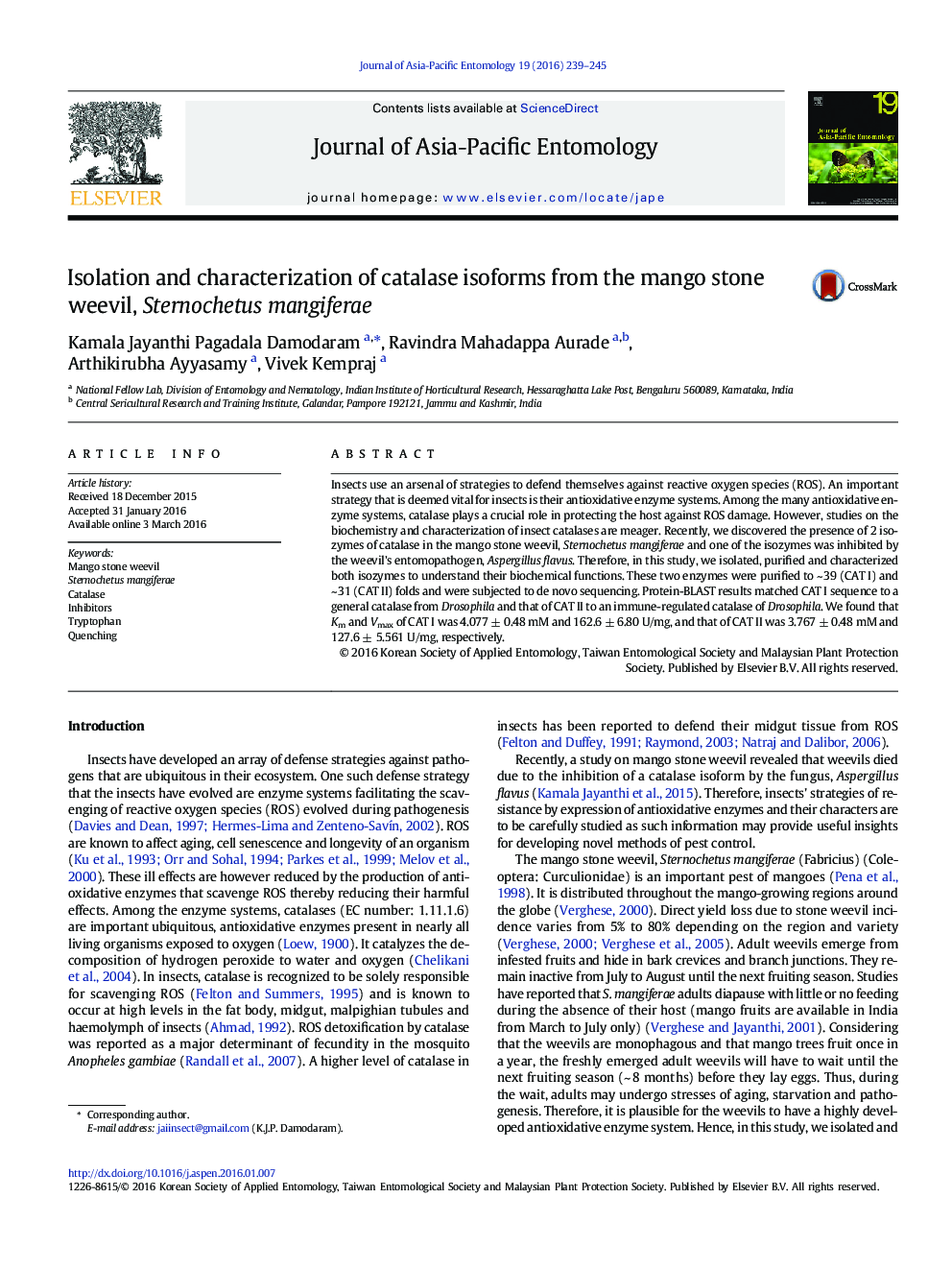| Article ID | Journal | Published Year | Pages | File Type |
|---|---|---|---|---|
| 6380246 | Journal of Asia-Pacific Entomology | 2016 | 7 Pages |
â¢Catalase isoforms were isolated and characterized from mango stone weevils.â¢CAT I was a general catalase and CAT II was an immune-regulated catalase.â¢CAT II production in adult weevils was abolished by fungal infection.â¢Kd and Vmax values proved CAT II as the most active catalase.â¢CAT II activity was less affected by inhibitors and metal ions.
Insects use an arsenal of strategies to defend themselves against reactive oxygen species (ROS). An important strategy that is deemed vital for insects is their antioxidative enzyme systems. Among the many antioxidative enzyme systems, catalase plays a crucial role in protecting the host against ROS damage. However, studies on the biochemistry and characterization of insect catalases are meager. Recently, we discovered the presence of 2 isozymes of catalase in the mango stone weevil, Sternochetus mangiferae and one of the isozymes was inhibited by the weevil's entomopathogen, Aspergillus flavus. Therefore, in this study, we isolated, purified and characterized both isozymes to understand their biochemical functions. These two enzymes were purified to ~ 39 (CAT I) and ~ 31 (CAT II) folds and were subjected to de novo sequencing. Protein-BLAST results matched CAT I sequence to a general catalase from Drosophila and that of CAT II to an immune-regulated catalase of Drosophila. We found that Km and Vmax of CAT I was 4.077 ± 0.48 mM and 162.6 ± 6.80 U/mg, and that of CAT II was 3.767 ± 0.48 mM and 127.6 ± 5.561 U/mg, respectively.
Graphical abstractDownload full-size image
